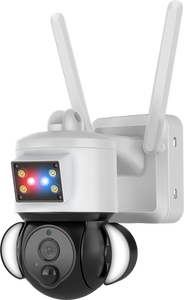Introduction to Motion Detection Computer Vision
Motion detection computer vision is an innovative technology that leverages advanced algorithms and machine learning techniques to identify and analyze dynamic objects within a visual scene. By utilizing a combination of image processing and environmental data, motion detection systems can detect movement in real-time, making it possible to monitor environments for various applications. In recent years, this technology has gained traction across industries such as security, healthcare, and automated systems, solidifying its role as an indispensable tool for enhanced surveillance and interaction.
Types of Motion Detection Computer Vision
- Video Analytics: This type analyzes footage from cameras to detect motion patterns, providing insights for security and activity monitoring.
- Optical Flow: A technique that estimates motion between two image frames, helping to track moving objects effectively.
- Background Subtraction: This method focuses on the difference between a static background and observed changes, perfect for surveillance applications.
- Deep Learning Models: These utilize neural networks to recognize more complex patterns of movement and behaviors in video footage.
Features of Motion Detection Computer Vision
- Real-Time Processing: This technology allows for instantaneous feedback, facilitating immediate responses to detected movements.
- High Accuracy: Advanced algorithms minimize false positives, improving reliability in varied environments and conditions.
- Adaptability: Ability to be customized for specific applications, whether for commercial security or interactive experiences.
- Integration Capabilities: Works seamlessly with existing systems, such as CCTV cameras and alarm systems, enhancing overall security infrastructure.
- User-Friendly Interfaces: These systems often include intuitive dashboards that make monitoring and analyzing movement data simple, even for non-technical users.
Applications of Motion Detection Computer Vision
- Security and Surveillance: Widely used in both retail and residential settings to monitor activity, detect unauthorized access, and respond to potential threats.
- Smart Homes: Enhancements in home automation allow for the detection of occupants, optimizing energy use and increasing comfort.
- Healthcare Monitoring: Inpatient monitoring systems leverage motion detection to observe patient movements, ensuring safety and preventing falls.
- Retail Analytics: Retailers use this technology to analyze customer movement patterns, improving store layouts and marketing strategies.
- Automated Vehicles: Integral for autonomous navigation systems that rely on real-time motion detection to safely operate in dynamic environments.
Advantages of Motion Detection Computer Vision
- Enhanced Security: Provides an extra layer of protection through continuous monitoring and immediate alerts in case of suspicious activities.
- Cost-Efficiency: Reduces the need for on-site security personnel, leading to lower operational costs without compromising safety.
- Improved Data Collection: Analyzes movement data to derive actionable insights that can improve operational processes and customer experiences.
- Accessibility: Can be integrated with mobile applications, allowing users to monitor environments remotely from their smartphones or tablets.
- Future-Proof Technology: As machine learning and AI continue to evolve, the capabilities and applications of motion detection computer vision are expected to grow, ensuring relevance for years to come.












































